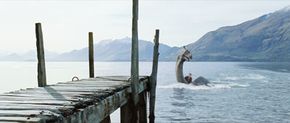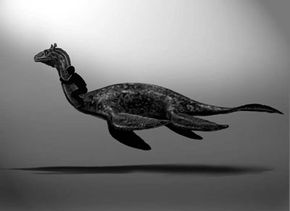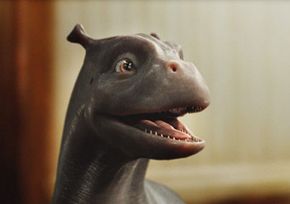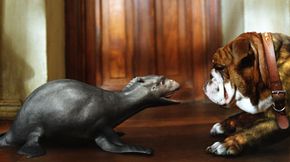You don't have to live in Scotland to know the legend of the Loch Ness monster -- the story has fascinated the world for years, since St. Columba recorded the first documented sighting of the mysterious creature in A.D. 565. And even though the famous photos published in the 1930s were debunked as a hoax, people have flocked to Loch Ness ever since, hoping to get a glimpse of the "water horse" nicknamed Nessie.
Movies Image Gallery
Advertisement
Scottish tourism could get another boost with the Christmas Day release of "The Water Horse: Legend of the Deep." The movie, based on the book by British children's author Dick King-Smith, is the story of Angus, a boy who discovers a strange egg on the shores of Loch Ness. It's directed by Jay Russell ("Ladder 49," "My Dog Skip") from a screenplay by Robert Nelson Jacobs and stars Emily Watson, Ben Chaplin and 13-year-old Alex Etel ("Millions") as Angus. The film -- specifically "Crusoe," the water horse himself -- posed a unique challenge for the creative team at Weta Digital, the New Zealand visual effects house known for its work on the "Lord of the Rings" movies and "King Kong."
Director Jay Russell first read "The Water Horse" nearly seven years ago and was enchanted by it. "I'd just finished 'My Dog Skip,' which had a similar theme involving a relationship with an animal and children during World War II," he says. He got King-Smith's blessing to change the narrative's perspective from a child's point of view to that of an older man remembering his boyhood.
But Russell put the idea aside and made "Tuck Everlasting" (2002) and "Ladder 49" (2004) instead. "With the technology where it was at the time and the cost of that technology, we couldn't get it made then," he says. "Technology needed to catch up. It did, and it allowed us to do things I envisioned without it costing $300 million."
Preparation helped saved time and money, too, notes Russell: "I was very specific about what I wanted so we didn't waste a lot of resources. We put every penny into the movie."
In this article, we'll detail Crusoe's development from concept to screen, outline the other logistic and technical challenges the filmmakers faced, and get insight into Loch Ness mythology from one of the premier experts on the subject.
Advertisement



